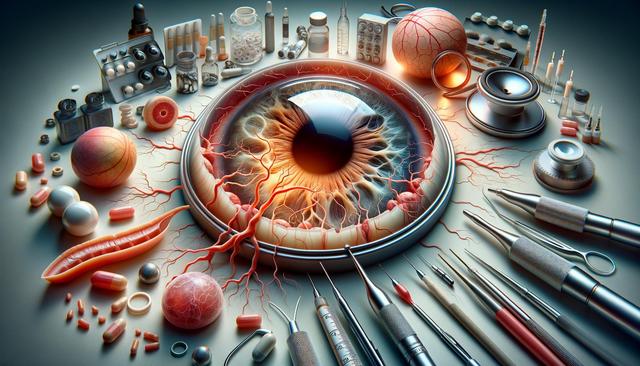Understanding Macular Degeneration: A Closer Look at Eye Health
Macular degeneration is a common eye condition that can significantly affect central vision, especially in older adults.

What is Macular Degeneration?
Macular degeneration, also known as age-related macular degeneration (AMD), is a progressive eye disease that primarily affects the macula, the small central portion of the retina responsible for sharp, straight-ahead vision. As the macula deteriorates, individuals may notice blurring or dark spots in the center of their vision, which can interfere with activities such as reading, driving, or recognizing faces. AMD is a leading cause of vision loss in people over the age of 50 and is categorized into two types: dry and wet. Dry AMD is more common and progresses gradually, while wet AMD involves abnormal blood vessel growth under the retina and can lead to faster, more severe vision loss.
Causes and Risk Factors
Several factors can contribute to the development of macular degeneration. While age is the most significant risk factor, genetics and lifestyle choices also play an important role. Individuals with a family history of AMD are at a higher risk, and certain genetic markers have been identified that increase susceptibility. Environmental and lifestyle factors include:
- Smoking, which significantly increases the risk of AMD
- Poor diet lacking in leafy greens and antioxidants
- Excessive exposure to ultraviolet (UV) light
- High blood pressure and cardiovascular disease
- Being overweight or obese
Understanding these risks provides an opportunity for early lifestyle changes that may help reduce the likelihood of developing this condition or slow its progression.
Symptoms and Detection
Macular degeneration often begins without noticeable symptoms, especially in the early stages. As the condition progresses, individuals may experience a range of visual disturbances. Common symptoms include:
- Blurred or fuzzy vision
- Difficulty recognizing faces
- A dark or empty area in the center of vision
- Distortion of straight lines, which may appear wavy
Regular eye exams are essential for early detection. Eye care professionals use tools like the Amsler grid and optical coherence tomography (OCT) to diagnose and monitor AMD. Early diagnosis is crucial for managing the disease and maintaining quality of life.
Treatment Options
While there is currently no cure for macular degeneration, various treatment options can help manage the condition and delay its progression. Treatment approaches vary depending on whether the AMD is dry or wet. For dry AMD, lifestyle adjustments and nutritional supplements containing vitamins C and E, zinc, copper, and lutein may support eye health. In contrast, wet AMD may require more aggressive interventions, such as:
- Anti-VEGF injections to reduce abnormal blood vessel growth
- Laser therapy to seal leaking blood vessels
- Photodynamic therapy combining light and medication for targeted treatment
In addition to medical treatments, visual aids and rehabilitation services can help individuals adapt to changes in vision and maintain independence.
Living with Macular Degeneration
Adjusting to life with macular degeneration involves both emotional and practical considerations. Vision loss can impact daily activities and overall well-being, but with the right support, many people maintain active, fulfilling lives. Strategies for living with AMD include:
- Using magnifying devices and digital tools to enhance vision
- Implementing better lighting at home and work
- Organizing living spaces to reduce the risk of accidents
- Joining support groups for emotional encouragement and shared experiences
Staying informed and proactive in managing AMD is key. Regular check-ups, adherence to treatment plans, and a healthy lifestyle can all contribute to preserving vision and quality of life.
Conclusion: Taking Steps Toward Eye Health
Macular degeneration is a complex condition that affects millions of people, particularly as they age. While it can be challenging, understanding the causes, symptoms, and available treatments empowers individuals to take control of their eye health. Through regular screenings, informed lifestyle choices, and supportive care, those at risk or living with AMD can better manage their vision and maintain independence. Staying proactive is essential—and even small changes can make a meaningful difference in preserving sight and enhancing daily life.